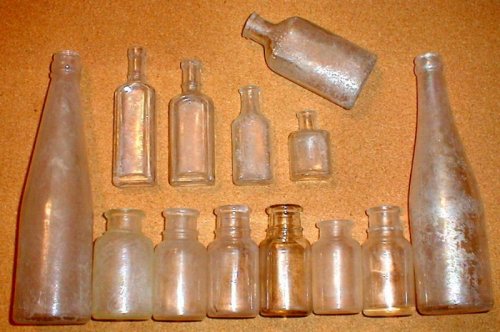Poeticallyinsane
Well-Known Member
I have 13 bottles that dont have screw tops (is that the correct term for the threads at the top of the bottle?) Does that mean they are older then the bottles with screw tops? Does it depend on the seam and that alone? When did bottles stop using corks and stoppers (with the exception of some bottles now days)? Here is a pic to help, it it will help any.



